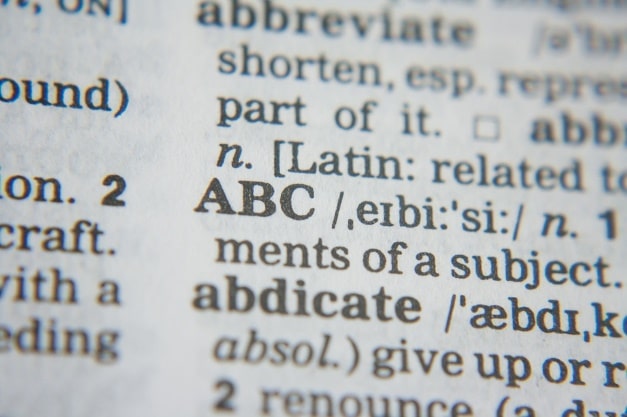If you’re unfamiliar with PR jargon, chances are you have no idea what this blog post is even about. Well if you’re in any way involved in the public relations industry, you’ve come to the right place either way. Let’s start off with the basics.
Jargon – Special words or expressions that are used within a particular profession or industry and may be difficult for others to understand.
For veteran PR pros, the following list of terms is standard, used often and understood completely. For our friends, family and even the newer members of the PR industry, the meaning of these terms is not so apparent. From the outside, it may even seem like we are speaking a foreign language.
Although the PR world is full of lingo, if you rehearse this short list and keep it in the back of your mind, you’re bound to start the PR profession off on the right foot and stay informed:
(in ABC order, for your convenience)

Image via Pixabay
Angle – An emphasis put on a specific aspect of a story that is presented to the media.
AP Style – Stands for “Associated Press Style”, the writing style guide for grammar, punctuation, etc. used for most content written in the PR and Journalism fields.
Byline – Located under the headline of an article, this information identifies the journalist of the piece.
B2B – Stands for “Business to Business”, a focus by a business on another business.
B2C – Stands for “Business to Consumer”, a focus by a business on consumers with their products or services.
Boilerplate – A short description of a company, mostly used to finish a press release.
Campaign – The collective term for the planning, execution and analysis of a plan of action.
Dateline – Found in the beginning of the lead of a press release, the dateline includes the date and place of origin of the information.
Exposure – How aware your target audience became of the message, client, etc. through executed PR efforts.
Feature – An article that goes into further detail of a story, such as the profile of an important person.
Hard news – A story that is completely newsworthy, factual and objective.
Inverted pyramid – Style of writing used for most press releases and journalistic articles in which most important information comes first, followed by less and less important information.
Media – The collective term for magazines, newspapers, blogs, radio, TV, etc.
Newswire – An electronic service that provides the latest breaking news stories.
Launch – An official announcement of a new product or service.
Pitch – A carefully crafted email or letter containing something newsworthy about your company that is directed to a specific journalist or blogger at a specific outlet in which you are trying to get a placement.
Press Kit – A compilation of the most informative documents, including press releases, fact sheets, brochures, etc., that is usually given to the media about your client, product or service.
Press Release – A statement containing new information that is issued to the media in hopes of the story being that is produced by that outlet
Reputation – Your target audience’s perception of your company, or a specific product or service
ROI – Stands for “Return On Investment”. The measure of the amount of a budget that was spent to achieve an objective, in terms of the income generated from that activity.
Spin – a form of propaganda, providing a biased interpretation that persuades public opinion in favor or against an organization, person, etc.
Target Audience – The specific public or group of people that you are trying to reach with your message.
Traction – The term used to express a media outlet’s interest in your client.
As the field of PR continues to evolve, this list of terms used regularly will change and grow. Though this is not a complete list, it can serve as a quick guide for anyone involved in the PR industry that is looking to sharpen up on their jargon.
.




.svg)